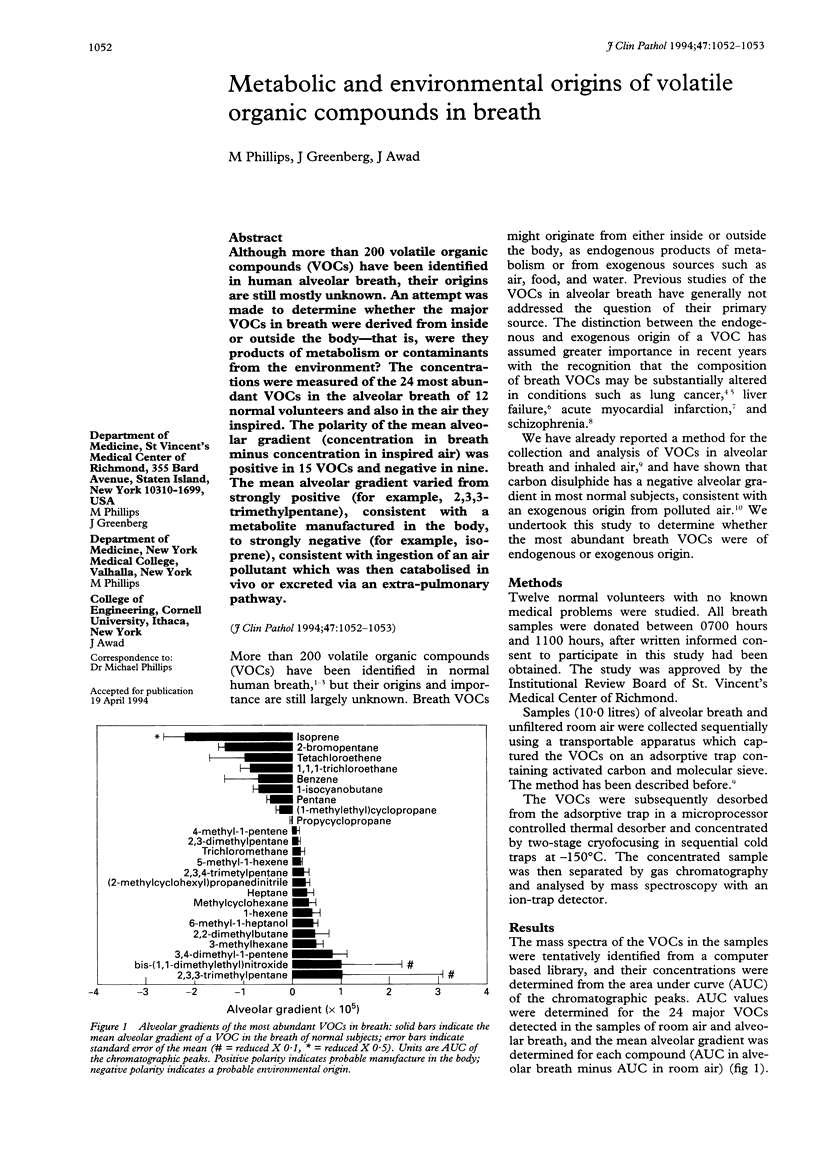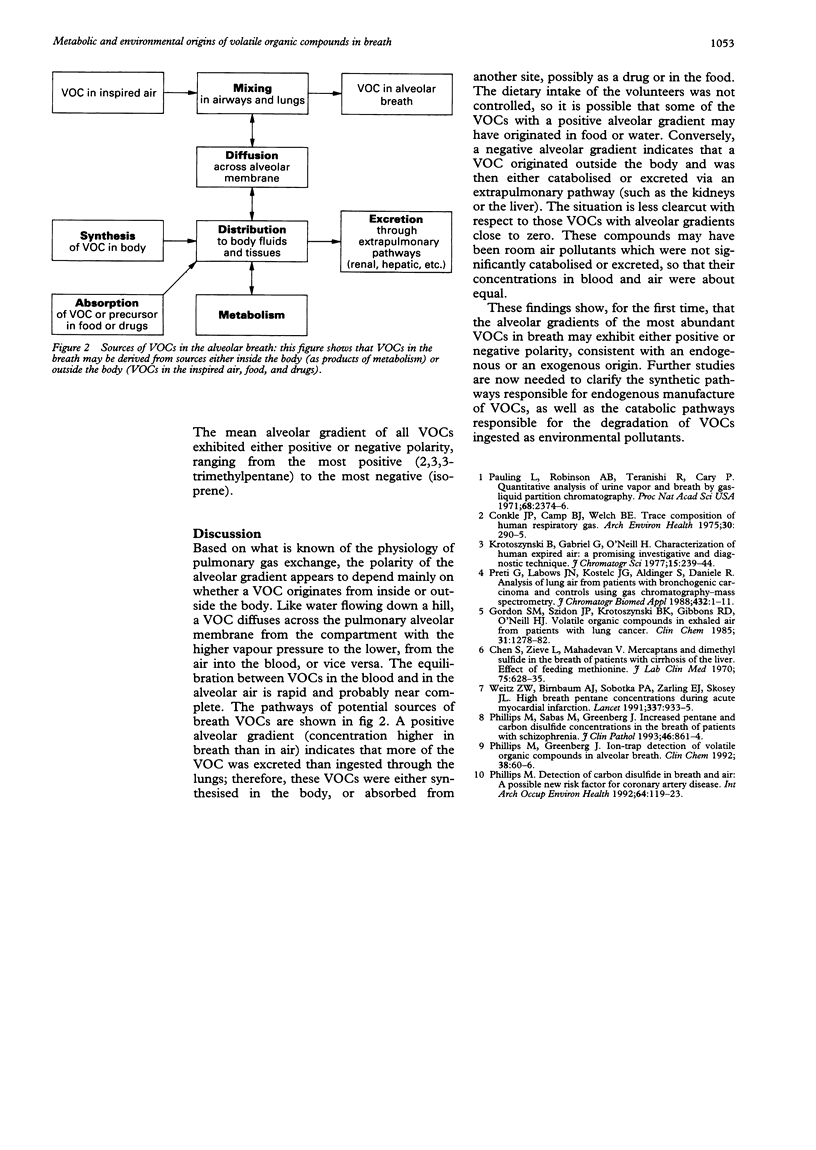Abstract
Although more than 200 volatile organic compounds (VOCs) have been identified in human alveolar breath, their origins are still mostly unknown. An attempt was made to determine whether the major VOCs in breath were derived from inside or outside the body--that is, were they products of metabolism or contaminants from the environment? The concentrations were measured of the 24 most abundant VOCs in the alveolar breath of 12 normal volunteers and also in the air they inspired. The polarity of the mean alveolar gradient (concentration in breath minus concentration in inspired air) was positive in 15 VOCs and negative in nine. The mean alveolar gradient varied from strongly positive (for example, 2,3,3-trimethylpentane), consistent with a metabolite manufactured in the body, to strongly negative (for example, isoprene), consistent with ingestion of an air pollutant which was then catabolised in vivo or excreted via an extra-pulmonary pathway.
Full text
PDF

Selected References
These references are in PubMed. This may not be the complete list of references from this article.
- Chen S., Zieve L., Mahadevan V. Mercaptans and dimethyl sulfide in the breath of patients with cirrhosis of the liver. Effect of feeding methionine. J Lab Clin Med. 1970 Apr;75(4):628–635. [PubMed] [Google Scholar]
- Conkle J. P., Camp B. J., Welch B. E. Trace composition of human respiratory gas. Arch Environ Health. 1975 Jun;30(6):290–295. doi: 10.1080/00039896.1975.10666702. [DOI] [PubMed] [Google Scholar]
- Gordon S. M., Szidon J. P., Krotoszynski B. K., Gibbons R. D., O'Neill H. J. Volatile organic compounds in exhaled air from patients with lung cancer. Clin Chem. 1985 Aug;31(8):1278–1282. [PubMed] [Google Scholar]
- Krotoszynski B., Gabriel G., O'Neil H. Characterization of human expired air: a promising investigative and diagnostic technique. J Chromatogr Sci. 1977 Jul;15(7):239–244. doi: 10.1093/chromsci/15.7.239. [DOI] [PubMed] [Google Scholar]
- Pauling L., Robinson A. B., Teranishi R., Cary P. Quantitative analysis of urine vapor and breath by gas-liquid partition chromatography. Proc Natl Acad Sci U S A. 1971 Oct;68(10):2374–2376. doi: 10.1073/pnas.68.10.2374. [DOI] [PMC free article] [PubMed] [Google Scholar]
- Phillips M. Detection of carbon disulfide in breath and air: a possible new risk factor for coronary artery disease. Int Arch Occup Environ Health. 1992;64(2):119–123. doi: 10.1007/BF00381479. [DOI] [PubMed] [Google Scholar]
- Phillips M., Greenberg J. Ion-trap detection of volatile organic compounds in alveolar breath. Clin Chem. 1992 Jan;38(1):60–65. [PubMed] [Google Scholar]
- Phillips M., Sabas M., Greenberg J. Increased pentane and carbon disulfide in the breath of patients with schizophrenia. J Clin Pathol. 1993 Sep;46(9):861–864. doi: 10.1136/jcp.46.9.861. [DOI] [PMC free article] [PubMed] [Google Scholar]
- Preti G., Labows J. N., Kostelc J. G., Aldinger S., Daniele R. Analysis of lung air from patients with bronchogenic carcinoma and controls using gas chromatography-mass spectrometry. J Chromatogr. 1988 Nov 18;432:1–11. doi: 10.1016/s0378-4347(00)80627-1. [DOI] [PubMed] [Google Scholar]
- Weitz Z. W., Birnbaum A. J., Sobotka P. A., Zarling E. J., Skosey J. L. High breath pentane concentrations during acute myocardial infarction. Lancet. 1991 Apr 20;337(8747):933–935. doi: 10.1016/0140-6736(91)91569-g. [DOI] [PubMed] [Google Scholar]


